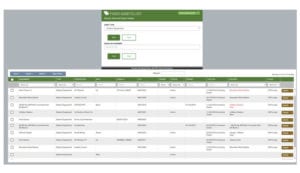By David Cain, Deputy Chief of Operations, Boulder, CO (ret)
It has become very apparent that over the last 10 years technologies in the Fire Service are changing at rapid pace. My recent trip to FDIC International was a reminder of how competition among manufacturers has created the latest and greatest technological advantage. Fire trucks, aerials, squads, brush trucks, tactical armored vehicles, communication vans and rehab trailers are changing every year.
The race to have the next greatest whatever is ever-present and changing. Vehicles are not the only thing going through this race to outdo their competition. Turnout gear or bunker gear, whatever you want to call it, is also racing to the finish line. Add to that advancement in SCBA, medical equipment and many other items, and you now have a steady stream of potential change with a big price tag.
Not to be outdone, the software industry is also crushing our brains with programs to manage training, staffing, response, payroll, RMS, dispatching, narcotics controls and many other functions. There is no magic bullet that can do all of this. However, increasingly reliable systems are available to address key parts of the equation. Cloud technology is rapidly becoming a tool of choice for many agencies to address a variety of needs. The Cloud can reduce the need for many IT functions, and yes, security is assured with established providers demonstrating a solid track record.
So, the question is, how do we manage, track, test and account for all of this? The logical answer is building an organized system that will be maintained and tracked by a few people. It is inefficient and wasteful to have these tasks spread out among different people, namely firefighters. At some point, the size of the department will determine the structure of managing assets and logistical support.
Depending on the size of the fire department, a planning/logistical Chief should be created. I have seen many departments that have done this. In many cases, the person in charge does not have to be a Chief or a uniformed person. A civilian position could be created for an individual with the skill set to build a comprehensive system capable of detailed program tracking that serves as a safety net to ensure everything important is tracked and maintained.
One key part of this equation looks at a department’s assets–including apparatus/vehicles, PPE, SCBA, Stations, narcotics, and critical assets.
- Apparatus includes all first response units, including command vehicles. We also have staff vehicles, trailers, boats and other motorized units.
- SCBA includes packs, bottles, masks, respirator and compressors and testing devices.
- PPE includes turnout gear, hoods, gloves, boots, helmets and other personal protection-related items.
- Stations need to be checked based on many factors that may vary from station to station—inventories within the stations, kitchen items, living and sleeping quarters items, etc.
- Narcotics and EMS supplies. Many departments do not have controlled meds, but those that do need to have a robust system of control, and it must be documentable on the spot when regulatory agencies or others come calling. This documentation can be critical to avoiding legal liability.
- Critical assets include TICs, radios, power tools, batteries, etc.
This sounds like a lot and it is a big task to track, test, and account for all of the above. But, we cannot provide the best service possible or be totally accountable if we don’t know what we have, how it’s performing, and what needs to be addressed to ensure optimum performance and trackability. There is great saying that sums it up: “You cannot manage what you can’t measure.”
I will add to that by saying that planning and finance are a big piece of getting on the right track. We owe it to our firefighters and citizens we serve to have our act together. Tools of the trade are always improving and becoming more complex. Drone technology, body armor, and tactical training are in many departments today. Vehicle tracking, health monitors, and RFID are new tools coming soon to your local FD.
The new age of cloud technology is for us to use to maximum benefit. Chiefs need to take the time to understand how it works and where it will save you money and time while streamlining your operations. Remember, “You cannot manage what you cannot measure.” You can only measure if you have a plan and embrace change that will help drive that plan forward in the most efficient way possible.
DAVID CAIN is a retired Operations Chief with the Boulder (CO) Fire Department, where he served for 34 years. David now serves as a Senior Advisor for pstrax.com, a software platform that helps fire departments streamline and automate their apparatus, equipment, and narcotics programs.

